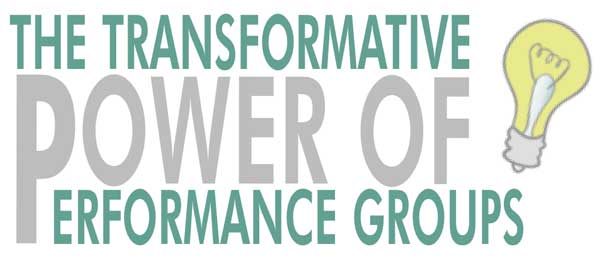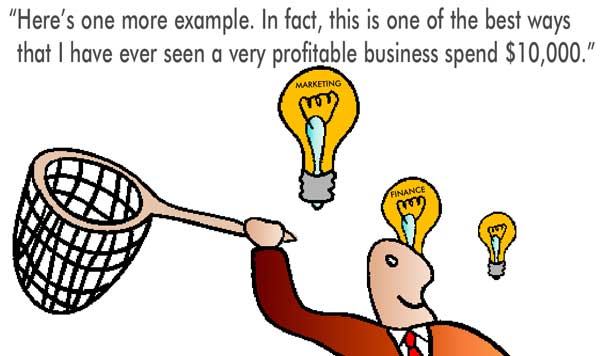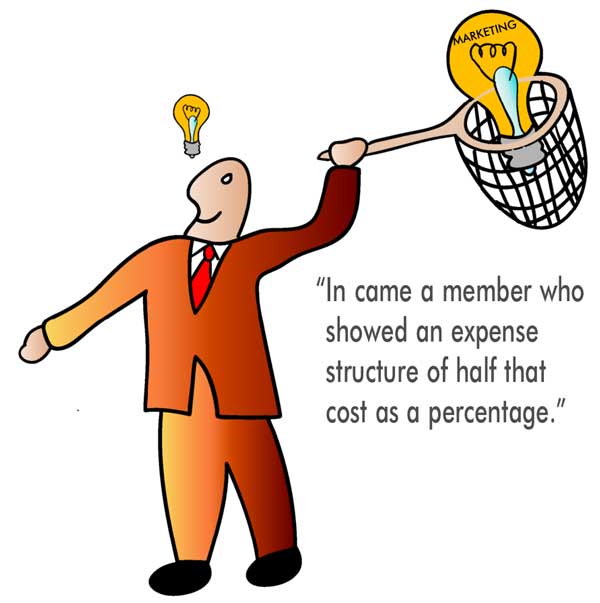
Twice a year for the past several years I have been travelling as a guide for two groups of twenty retailers in an ongoing quest. We have been from Alaska to Aruba, from San Diego to New York, and to many places in between. We’ve evaluated countless stores and warehouses as part of our semi-annual performance meetings. It sounds like fun, and it is, but it is also work, a never-ending quest for continual business improvement.
As a group leader, I see how executives in performance groups are able to leverage each other’s advice. They develop a business camaraderie which exists “outside” the day-to-day operations that allows them to achieve better results than they could achieve on their own.
You can probably tell that I am a fan of these groups called by various names including performance groups, best practice groups, peer groups and 20 groups (in the auto industry). There are a number of consultants in our industry that host them.
In this article, some powerful practices that act as a catalyst for growth will be discussed. You can use them to help you make your business operations more efficient, maximize sales, profitability, and cash flow.
FOUR PERFORMANCE GROUP PRACTICES
Practice #1: Kaizen (改善) and Six Sigma.
Kaizen is the Japanese term for never-ending improvement at all levels of an organization. It is a philosophy that has been used successfully in the manufacturing, retail, and service sectors to help businesses continuously seek and implement ways to get to the next level. To me, this concept is at the core of the power of performance groups. It forms the necessary strategic, out-of-the-box thinking and ATTITUDE that is required for growth. It is a “big picture” approach with an eye on incremental steps forward. The odd thing with big picture thinking is that seemingly simple ideas can have massive impact on retail operations. Performance group members engage each other with open minds. They understand that interaction with people from outside their business who understand their challenges can cause a golden light bulb to turn on.
The most common questions asked in these groups are about how to handle retail challenges. When you get twenty smart professionals, who can walk the talk, unselfishly helping other professionals to improve, one thing is certain: there’s lots of sharing of qualified answers and opinions based on first hand experiences.
Related to the Kaizen way is the Six Sigma approach. It is a methodology that can be used tactically to continuously improve efficiency and minimize operational errors. Leaders such as Jack Welch at GE have used Six Sigma techniques for process improvements. Performance group members take a similar path to identify challenges and take positive actions.
DMAIC Methodology: DMAIC is one Six Sigma methodology that can be adapted to continuously develop a retailer’s operation in any area of the supply chain including marketing, sales, purchasing, distribution, finance, and management reporting. By way of an example, here is a brief introduction:
Define the challenge/opportunity. Performance group members are always looking to advance some area of their business or a process in it. However, the particular area often shows itself unexpectedly. For example, once twenty of us toured a member operation in Texas. After viewing the distribution center, we travelled to a second store. There we noticed some non-producing square footage, an alternate entrance beside the main entrance in a strip mall location. The group was asked to consider how to handle this space. That’s Bingo when a golden light bulb moment occurred. A mattress gallery was the answer. Here an opportunity arose, the challenge defined and a solution found.

Measure your current process. Performance group members measure how they are performing. They use a variety of metrics to report on and evaluate processes. Within a retail operation there are a multitude of job events occurring simultaneously. Management is clueless without proper measures. So, with defined measures in place in all departments, an underperforming process will send off a signal. Seek to set measures in the following operational areas: marketing, selling, customer management, purchasing, merchandising, receiving, picking, delivery, billing, accounting, and after-sale service.
Analyze data. Performance group members are usually data rich. They employ industry specific systems and operating procedures. Over a fairly short amount of time, a wealth of information builds up in their databases. This enables analysis. It is critical to know what data to extract, how to extract it, when to extract it, what it is for, and how to use it to benefit an organization. For example, suppose a business determines that its inventory is underperforming by measuring performance against the dollars invested in merchandise. By analyzing inventory, sales, margin, and investment data each month by category and vendor, they will probably find at least a few segments are pulling the profitability of the averages down. Analyzing data properly leads to focus. Focus leads to the efficient use of resources – most notably time and money.
Improve your process or create a new process. Performance group members take action. They make decisions. They are the opposite of those that live by the notion of: “We do it that way because we always have.” Let me continue the prior example of inventory performance. After analyzing data, suppose the evidence points to a poor re-purchasing process that reduces selling turns for a particular vendor due to stock-outs of best sellers. By recognizing the problem, new processes can be put in place to elevate the performance of this vendor. For example, a routine scheduled review of the rates of sale demand, stock levels of best sellers, and re-order lead time.
Control your new process. When putting a new process in place or making any operational change for that matter, be vigilant. One of the biggest problems retail furniture store managers exhibit is not the inability to recognize a problem, but the inability to continually execute on the solution. Performance group members face these same challenges. However, possibly due to their proactive nature they are more apt to follow up and ensure the changes that they make are successful. They control the new process. They continually measure it and analyze the data it produces. If it does not produce the desired increase in efficiency, they adjust and refine.
Practice #2: Benchmark against Peers.
A powerful reason why performance group members are successful is that they benchmark. They compare themselves against each other and the industry at large. Using a host of operational and financial KPIs (Key Performance Indicators), each member can see where they are ahead or behind. This peer comparison is an important factor in their success.
Here is an example of KPI benchmarking at work: Several businesses in a group had a fairly decent net warehousing and delivery expense as a percent of sales – or so they thought. Then, in came a member who showed an expense structure of half the cost as a percentage. This made the other members perk up and ask, “How do you handle that level of business on such a minimal cost structure?” A combination of elements that resulted in cost savings included: just-in-time purchasing, speedy display, cross docking, bar coding, appropriate set-up and delivery income, minimized damages, routing technology and a perfect delivery system.
In the end, businesses learn from other businesses and industry experts. Some of the smartest people in this industry are borrowers who look to see what others are doing, how they compare, and improve ideas.

Practice #3: Share and Give Best Practices
s. One of the most powerful sessions in a meeting of performance-minded business owners is the best practice session. It’s where people share what works (and what doesn’t). Here, each person in the group brings something interesting to the table. The idea is to make a conscious effort to deliver a practice or idea that can help others. In return, each member gets repaid the favor at least ten-fold by hearing the ideas of the other participants. Practices include advertising campaigns, hiring, warehousing and delivery techniques, digital media, store design, merchandising tools, equipment purchases, incentive programs, management processes. There are no rules other than to make an effort to help everyone.
Once again, sometimes the simplest ideas can have a massive impact. Here is another example: A member shared a story about his frustration with the sheer amount of styrofoam his warehouse crew discarded. It cost labor hours, trash disposal fees, took up precious room, and was wasteful. So, he purchased a foam recycling machine. Not only did it squish the stuff into a small block, freeing up, time, space and money, but his company was able to generate revenue by selling the waste. His store became a recycling point for his city, generating more funds for the retailer. Plus, the store received free publicity, by becoming a known green leader in the community.
Here’s one final example of a best practice shared during a meeting. It’s one of the best ways that I have ever seen a very profitable business invest $10,000. This out-of-the-box retailer was tired of dropping money on ad campaign after ad campaign with questionable results. Instead, he asked his local news to announce that he would match any customer’s Facebook “like” in support of the charity featured on his Facebook page with a $1 donation. He received 5,000 “likes” in just a few days, doubled the amount, and gave away a big fat check on the morning news. He told us later, “The best marketing in the world is to give back to the community in which you do business.”
Practice #4: Set Goals and Become Accountable.
No goal equals no plan. No plan is a plan to fail. Those who set business goals with clear tactics are much more likely to achieve desirable results. Performance group members do three very important things when they meet twice per year.
- They report on the progress of their goals from the last meeting.
- They hold each other accountable for achieving those goals.
- They report to the members about the goals they plan to achieve before the next meeting.
Often times, group members set goals after hearing feedback from the group. In many cases, too, strategic areas that need attention are suggested by peers. Members agree to take action and sign their name to it. At subsequent meetings, members report the results of their actions and are held accountable for successes and failures. The peers support each other in this process – congratulating each other for achievements and offering advice in times of failure. In effect, performance group members become an impartial, benevolent, and external board of directors.
When considering how you can grow your business profitably into the future, consider some of these ideas and practices. Commit to a business lifestyle of continuous improvements.